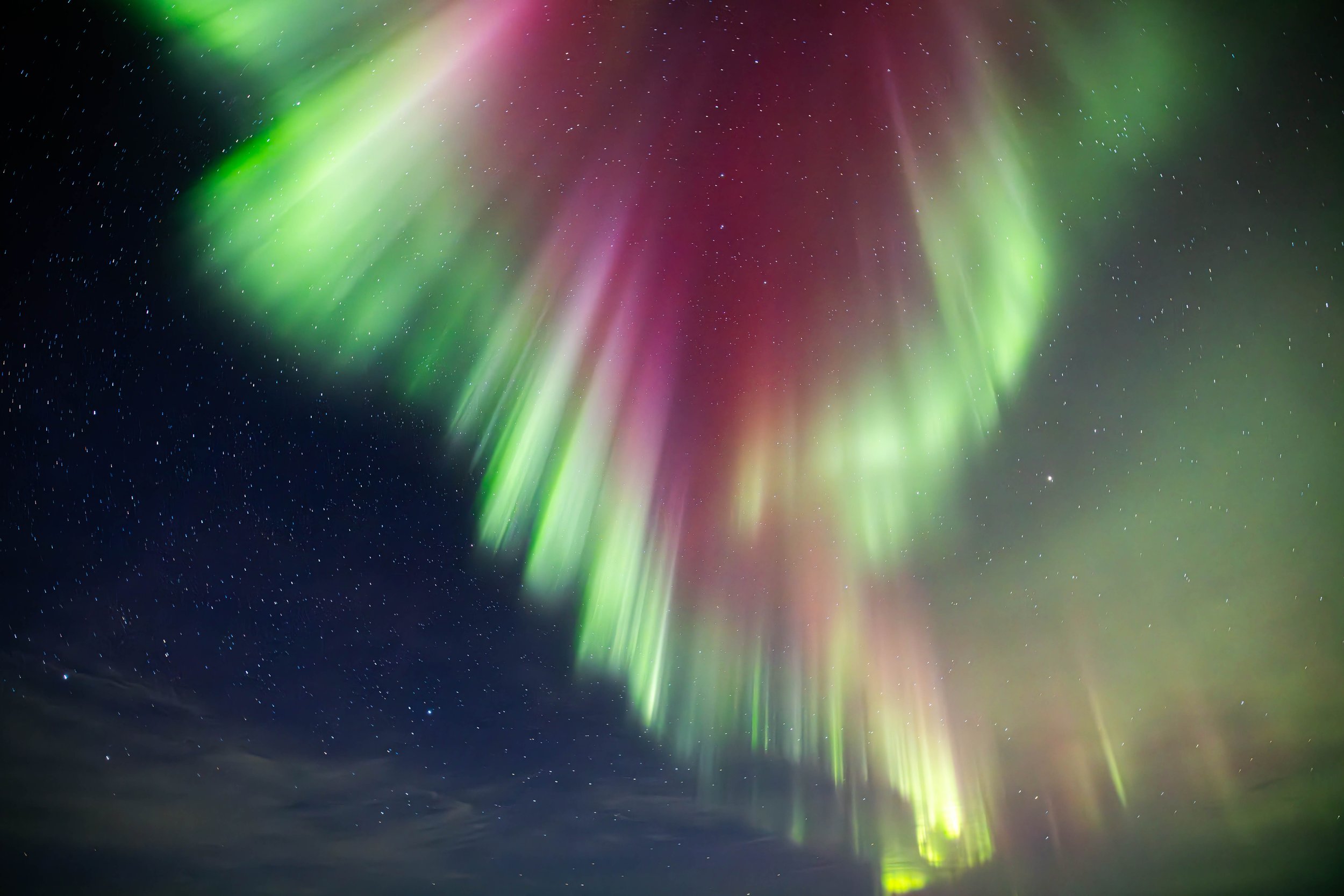Northern Lights and Sub-Arctic Life
Without a doubt, Churchill is a top destination for those hoping to catch a stunning display of the Northern Lights, also known as the Aurora Borealis. Positioned directly beneath the Northern Hemisphere’s auroral oval, Churchill is a hot spot for auroral activity and witnesses over 300 active nights every year. I have been guiding multi-day expeditions in Churchill in search of the Aurora since 2019, which has allowed for ample time to marvel at one of nature’s most spectacular events. Some nights require tenacity, bundled in countless layers to battle bone chilling winds at -60C in the middle of winter, while others are spent comfortably in a sweater and a toque during evenings in late summer. No matter the conditions, when the Northern Lights shimmer and dance overhead, it is impossible to be anything but mesmerized by the dazzling spectacle before your eyes. And while the nights might be spent chasing the lights, the days are filled with plenty of excitement, searching for Churchill’s other treasures. Enjoy this collection of photographs portraying the magic of the Aurora Borealis coupled with the captivating skies and wildlife found throughout the year in this frontier town.
Aurora Borealis
Wildlife Around Churchill
Climate change is reshaping the Arctic ecosystem in Churchill, Manitoba, with profound impacts on a variety of species. Arctic hares, Arctic foxes, and ptarmigans, which have long relied on seasonal color changes to blend into their surroundings, take their cues from daylight rather than temperature. But as winters arrive later and snow cover becomes increasingly unpredictable, these animals are left mismatched against their environment, losing the camouflage that once kept them safe from predators. At the same time, red foxes—better suited to warmer conditions—are pushing farther north, competing with Arctic foxes for food and denning sites and putting additional pressure on an already vulnerable species. In Hudson Bay, beluga whales are facing new challenges as shrinking sea ice alters their migration routes and strips away the natural barriers that once offered protection from orcas, which are now appearing in Arctic waters more frequently. While polar bears often dominate discussions about climate change in the North, they are far from the only species at risk. The rapid shifts in this fragile ecosystem serve as a stark reminder that urgent action is needed to protect Arctic wildlife for generations to come.




























































